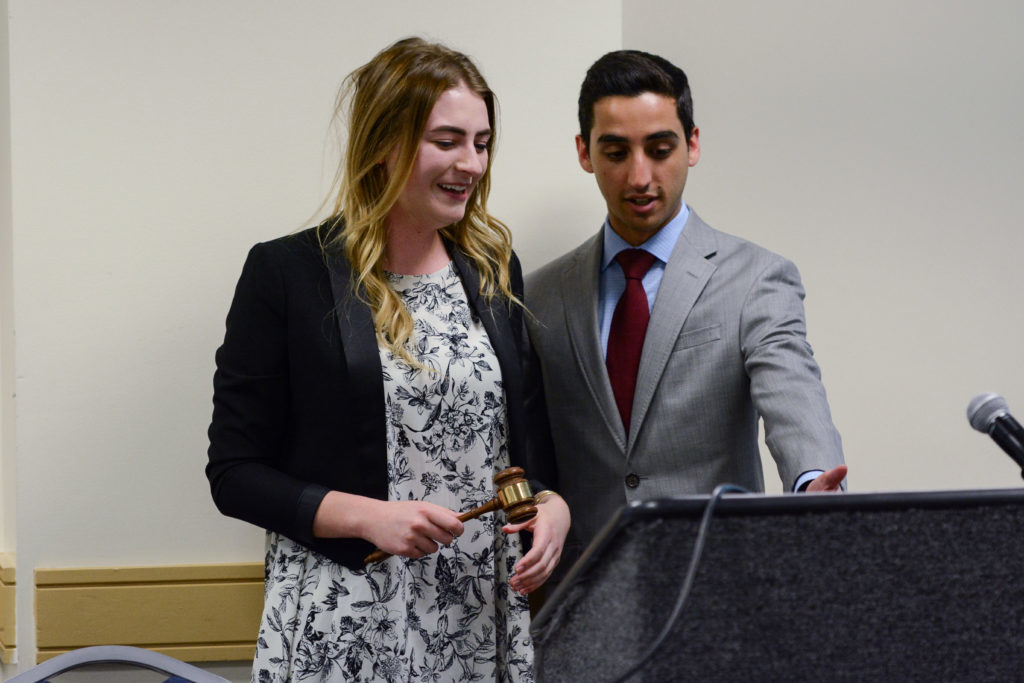About 18 months after Student Association leaders launched an effort to measure student affordability, the results of the research still haven’t been made public.
The reports, which were mandated by an SA Senate resolution passed in August 2016, gauged how much students were paying for typical expenses, like printing costs or space rentals, in comparison to peer institutions. The reports were expected to be completed by last spring and form the basis of the senate’s effort to address affordability concerns.
But the effort wasn’t completed on time and – following months of delays – SA leaders say the reports will be released next month.
SA leaders said findings from both the research and the survey are slated to be made public in time for prospective senators to cite and discuss while running for office in next month’s elections. They said the reports were pushed aside as the SA pursued other projects at the end of last academic year, and a new set of senators picked up the work again last fall.
Last year, three senate committees – finance, student life and academic affairs – divided the research on different aspects of student expenses, like the costs of laundry and room rentals.
Former SA Executive Vice President Thomas Falcigno, who led the senate when the resolution passed, said the affordability reports were a heavier task than originally anticipated because the SA tacked on a student affordability survey in December – months after the original resolution was passed – to delve further into students’ financial concerns.
When his time as an SA leader ended last May, he said information was still being compiled into the report.
“You could say it was one of my regrets in terms of the organization of it,” Falcigno said. “We just kept figuring out that there was so much more to do with affordability that it took us a lot longer than we thought to really be able to do that research and really compile the report.”
SA Executive Vice President Sydney Nelson said last year’s SA administration “did not dramatically touch the committee’s reports,” leaving her and SA President Peak Sen Chua with only the research and raw survey data when they assumed their positions.
“Because last year’s administration didn’t release the reports immediately, the committee’s reports may not be reflective of the current environment,” she said in an email, pointing to the revised list of peer universities that GW now uses.
She said she hopes the reports’ release will open a discussion “toward addressing the very real financial barriers students face” for candidates during SA elections in March. Nelson declined to say what the findings of the research and the survey were, pointing to their release next month.
In August, Chua and Nelson launched “Top Textbooks,” a program that makes copies of textbooks in popular lecture courses available to loan to students in GW Libraries. Last spring, the SA also cut the cost of double-sided printing.
SA senators who conducted the research said the reports will enable senators to continue pressing administrators on affordability and create policies that address student concerns throughout the upcoming academic year.
Rilind Abazi, a former freshman senator in the finance committee who conducted research for the finance committee’s affordability report, said he compared costs of rented venue spaces with GW’s peer institutions.
In the finance committee report, which was submitted in December 2016 and obtained by The Hatchet, senators recommended more “narrowly focused research” to bring down expenses for costs associated with recording events. The report also suggested a meeting with the events and venues office to “discern how these fees are determined and if there are any funds that are allocated for these venues from what students pay in tuition.”
But senators found there wasn’t a major difference in rental costs at GW compared to peers.
“This research was becoming part of the larger process to look into ways we can make the student experience more affordable,” Abazi said. “I couldn’t say I had time expectation – I’m more concerned with what tangible solutions will come out of this.”
Sydney Eskin, the former chair of academic affairs whose committee focused on the expenses of items like menstrual hygiene products, said the reports come after a year of effort researching the issues and compiling data.
She said the release of the reports may have been delayed because of leadership turnover when the new seat took over last May. She said old senators likely passed on the work for new members to finish.
Just four candidates returned to the SA Senate from the 2016-17 academic year, which senators attribute to the stress of senators’ high workload and lack of experience working in a student government.
Logan Malik, the former chair of the student life committee during the time the research was conducted and current vice president for undergraduate student policy, said his committee focused on the costs of amenities like laundry, student health care and GWorld and key replacements.
Although the release was delayed, Malik said “it was an important tool for senators” to build teamwork within their committee and ground their projects in SA-led research.
“It increased their knowledge and empowered them to either make a difference or lay the groundworks for people to come,” he said.
Callie Schiffman contributed reporting.





